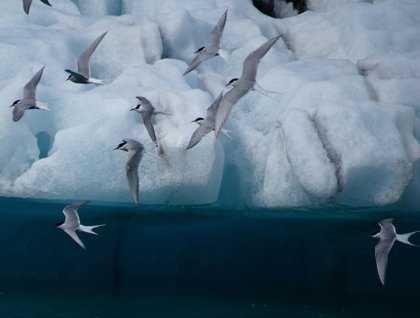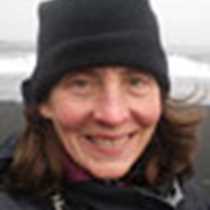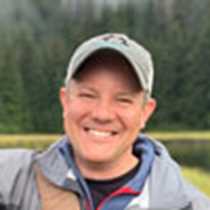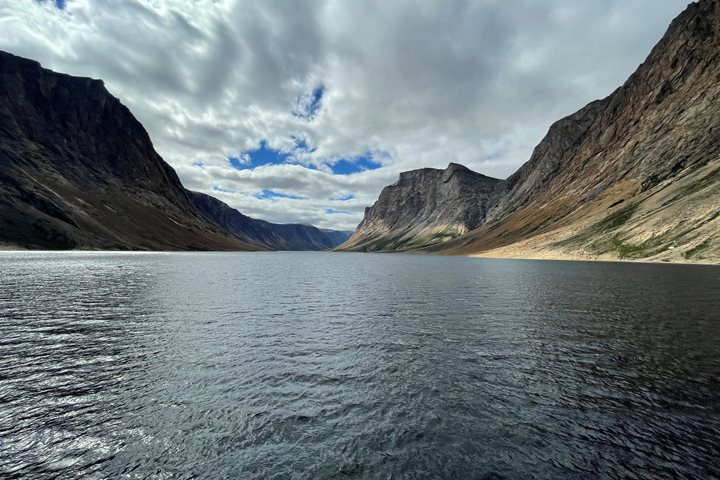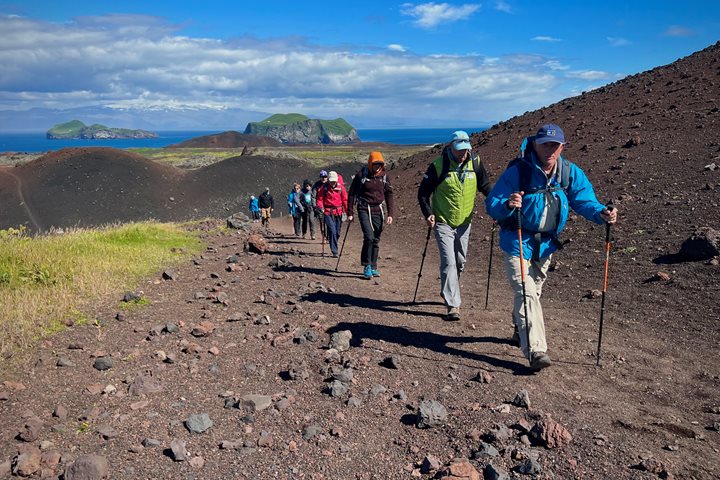We arrived in Djúpivogur in the misty morning light. As always, we were accompanied by our loyal companions the fulmars—beautiful gray and white birds that look somewhat like gulls, but are in fact related to albatrosses and other tubenoses. We tied up in a snug, quiet harbor and prepared for our big adventure ashore. On the quay was a line of granite eggs on pedestals—beautiful work of a local artist highlighting the shapes of the eggs of different Icelandic bird species.
Tour buses took many of us south and west along the ring road, first to a brief stop in Höfn, and then to Vatnajökull glacier and Jökulsárlón, the glacier lagoon. Bizarre shapes of ice in blue, white, and clear crystal floated in the blue-gray water or lay on the black sand. We took amphibious boats into the lagoon to cruise amongst them and had a taste of pure ancient ice from before the industrial revolution. Black lines of volcanic ash were in some of the ‘bergs, while others were dense and blue from the bottom of the glacier, where intense weight had squeezed the air out. A skua and a great black-backed gull had a tiff overhead.
The guide in our bus was pleased to see fledgling arctic terns in the flock that nested just off the parking lot. The disparity in timing between that colony and the one on the island of Vigur was surprising—Vigur birds were still sitting on eggs a few days ago and only a few tiny chicks had hatched. We saw terns today chasing their flying chicks with long thin fish called sand lance in their bills. Seeing fledglings and fish is a good sign—the puffins and terns of the south coast haven’t been doing so well for the past dozen years, with a lack of food being the main reason.
Vatnajökull is the largest glacier in Europe, and the third largest mass of ice in the world (following the icecaps of Antarctica and Greenland). Our group left for the 45 minute drive up to the glacier from Smyrlabjørg, a farm hotel where we lunched. The ride up the gravelly twisting road in vans was a thrill in itself as we took one hairpin turn after another. Our driver paused to show us where the glacier had been in 1930, filling a crevasse that plunged 300 meters off the side of the guardrail-free road. Clad in coveralls, helmets, and rubber boots, we raced on snowmobiles across the snow cone surface of the glacier through rain and mist.
Many tales from our guide on the ride back. Swans were abundant in the watery outwash plains near Höfn. Smooth curtains of grey volcanic scree swept down from the dark basalt mountaintops to the green fields where sheep grazed and gazed out to sea. On this young and vibrant island, life indeed, is good.

